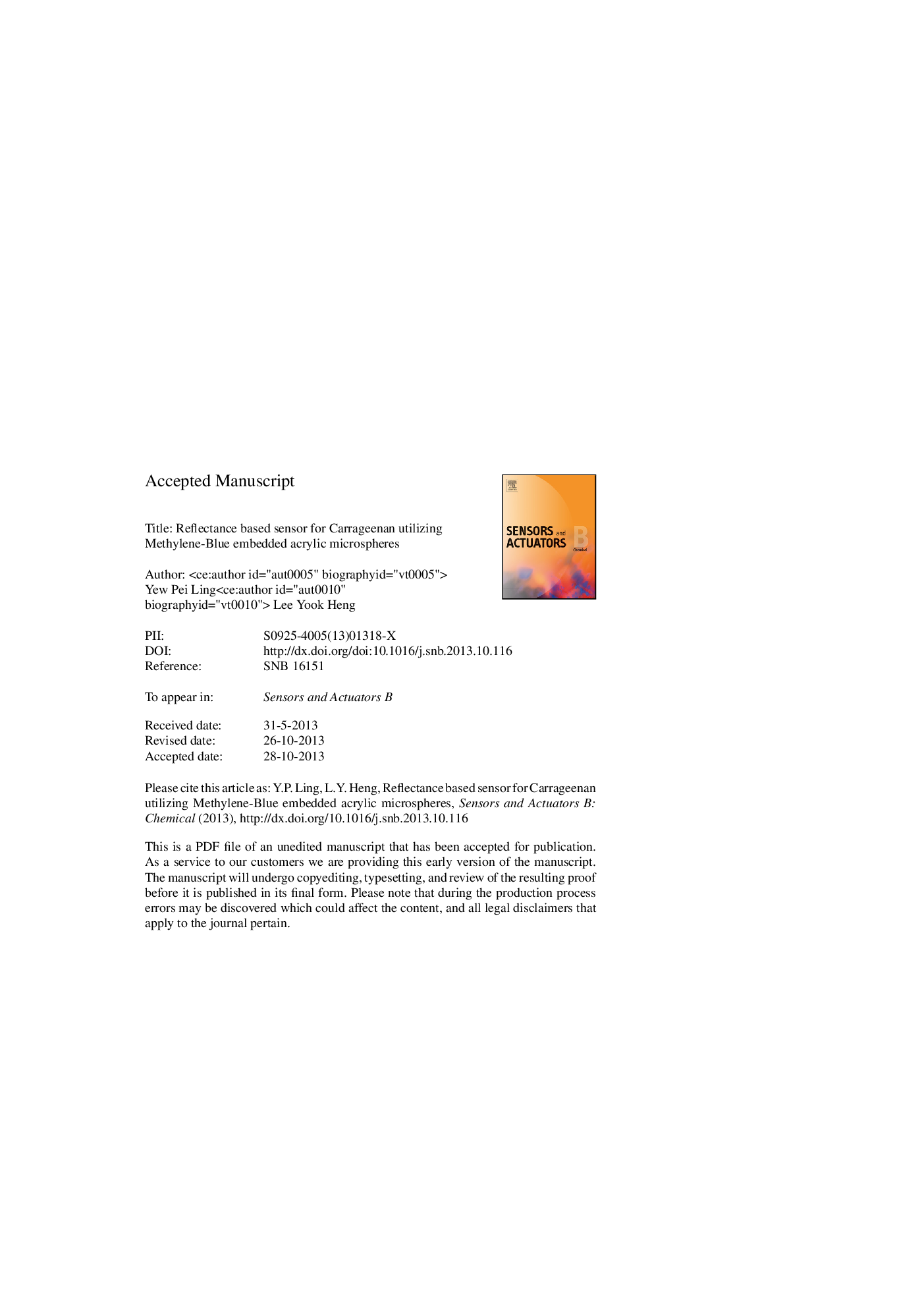| Article ID | Journal | Published Year | Pages | File Type |
|---|---|---|---|---|
| 7147449 | Sensors and Actuators B: Chemical | 2014 | 25 Pages |
Abstract
Studies were conducted to understand the complexation behavior of carrageenans and methylene blue (MB) under immobilized conditions to build a novel carrageenan sensor. The sensor was an optical device based on reflectance changes due to the change of MB color (blue to purple) on exposure to carrageenan. MB was immobilized on poly(n-butylacrylate-co-N-acryloxysuccinimide) [poly(nBA-NAS)] microspheres and were coated onto a plastic support to fabricate the sensor. The sensor response was found to be related to the formation of the MB-carrageenan complexes and was more selective to Iota-carrageenan when compared with other types of carrageenans, e.g. Lambda- and Kappa-carrageenans. Besides, the sensor also showed no response to other gelling agents such as alginate and agar. Thus, the sensor exhibited a linear response range to Iota-carrageenan from 80 to 5000 ppm with a sensitivity of 377.5 ± 1.37 ÎIntensity/decade (R2 = 0.980). Lower detection limit of the sensor was 80 ppm, whilst repeatability and reproducibility were 0.36% and 0.31% relative standard deviation, respectively. Moreover, the sensor was useful in analyzing carrageenan in real samples with 83-117% recovery values.
Keywords
Related Topics
Physical Sciences and Engineering
Chemistry
Analytical Chemistry
Authors
Yew Pei Ling, Lee Yook Heng,
